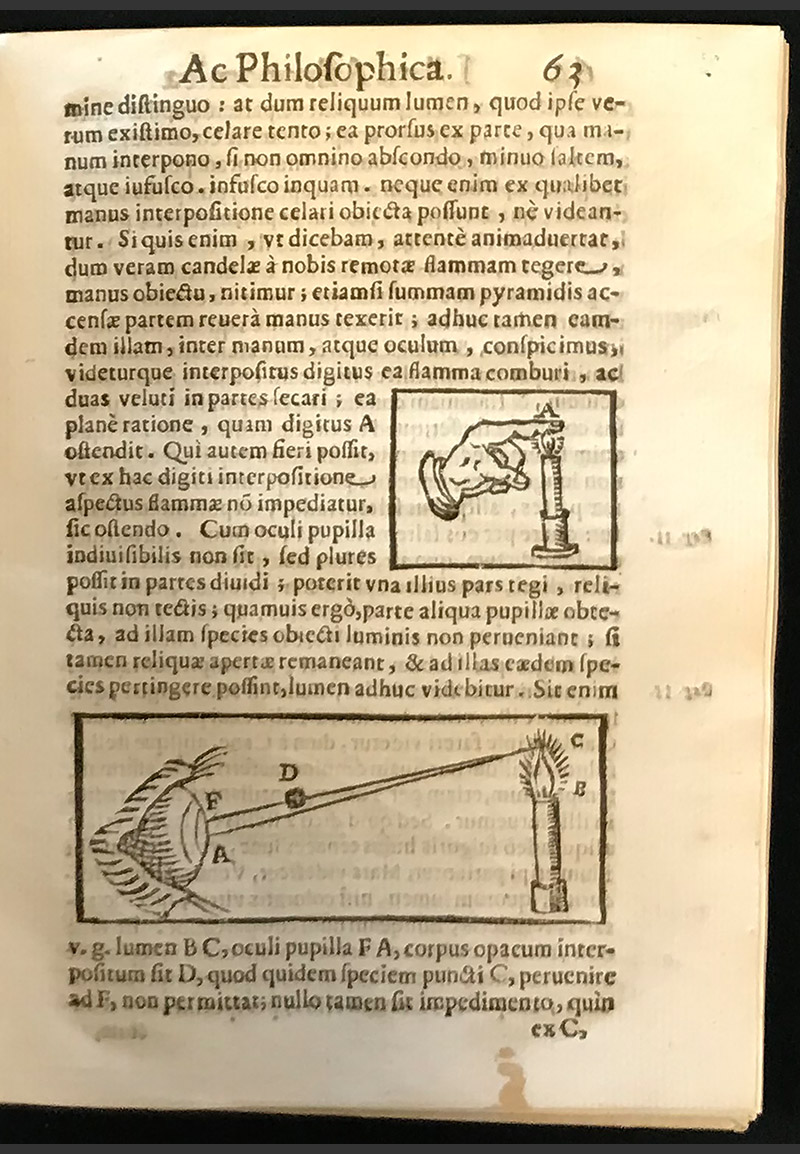Libra Astronomica: Woodcuts

- Woodcuts illustrating Grassi’s response to Galileo’s theory of optics, pag. 63.
- Orazio Grassi (1583-1654).
- Libra astronomica ac philosophica qua Galilaei Galilaei opiniones de cometis a Mario Guiducio in Florentina Academia expositae, atque in lucem nuper editae, examinantur a Lothario Sarsio Sigensano.
- Perugia: Marco Naccarini, 1619.
In general, the Libra astronomica ac philosophica contains additional empirically based arguments against Galileo’s theory of comets. For example, through these woodcut illustrations Grassi discusses some aspects of Galileo’s theory of optics. Broadly speaking, Galileo follows Pythagoras’ theory that light is generated from luminous bodies, causing reflection and the sensation of sight when entering the eye. Specifically, in the page shown here, Grassi refers to an experiment conducted by Galileo. If you put your hand between the light of a candle and your eye, the brightness surrounding the light will not be hidden because the rays of light will be visible. However, continues Galileo, if you cover the true light, which is the upper section of the rays, the lower rays will cease to appear. As shown in these two woodcuts, Grassi proposes a completely different theory. He explains that if you try to hide the upper rays with your finger, the light is still visible. And the second woodcut further illustrates the point: it shows that an object blocking the upper rays of light does not hide the light because other sections of our pupil can still see it.